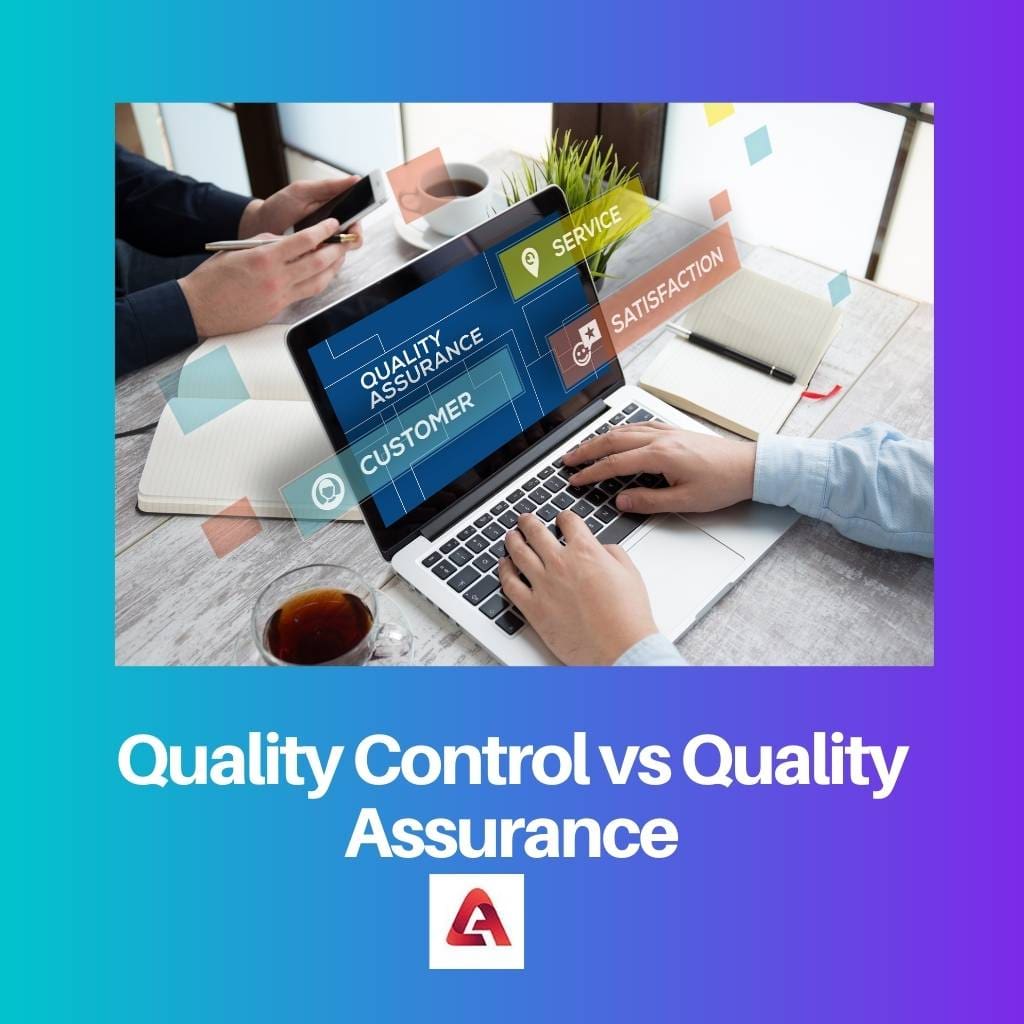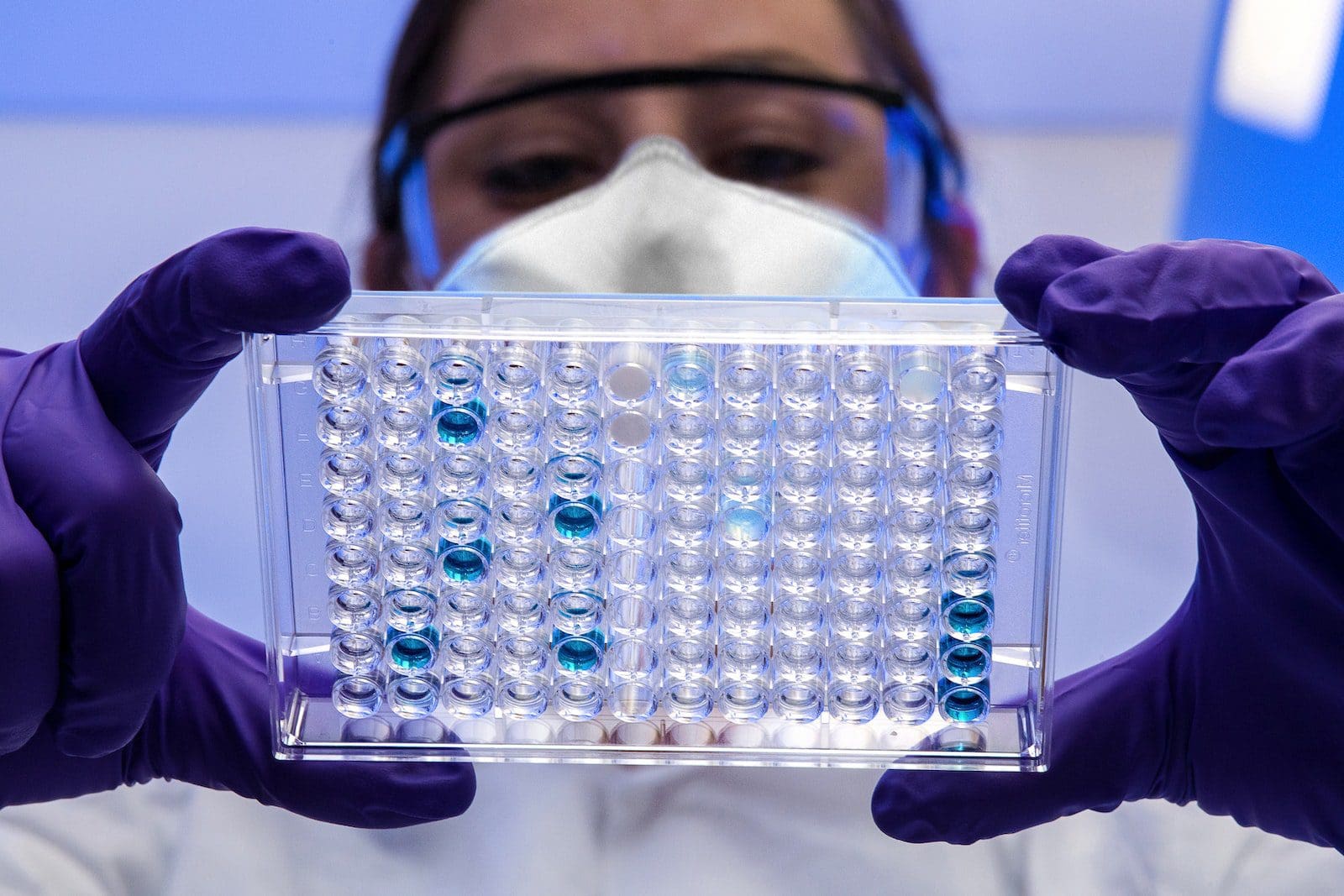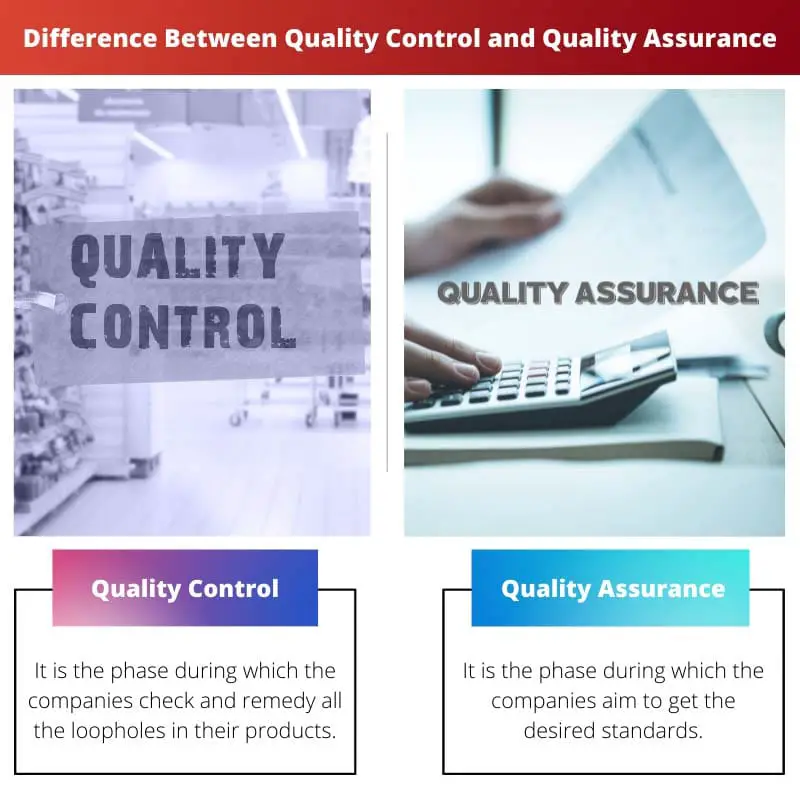One of the most significant thumb rules of conducting business is to ensure that your customers are satisfied with the overall appeal of the products at all points of time. Herein lies the genesis of the concept of “Quality Management.”
Eventually, companies expanded the horizons of quality management to include quality assurance and quality control to produce products that conform to a certain standard and remain in business by providing quality products to the people.
Key Takeaways
- Quality Control is focused on identifying and fixing defects in the product or service, while Quality Assurance is focused on preventing defects from occurring in the first place.
- Quality Control is a reactive process, while Quality Assurance is a proactive process.
- Inspectors or testers carry out Quality Control, while Quality Assurance involves everyone in the organization.
Quality Control vs Quality Assurance
Quality Control (QC) is a set of activities designed to ensure that products or services meet specified quality standards. QC is focused on detecting and correcting defects or errors in the final product. Quality Assurance (QA) is a set of activities designed to ensure that quality standards and processes are being followed throughout the entire product or service lifecycle.

Quality control is the phase during which companies focus on recognizing any faults in their products and fixing them efficiently.
The primary role of quality control is to ensure the company at once checks for all the possible faults in their products and sells them to people only after making suitable alterations to them.
Quality assurance is the phase during which companies focus on assuring that the desired quality of their products is reached.
The primary role of quality assurance is to ensure that the product or service that is being provided to the people does not suffer from any loophole and conforms to the desired standards.
Comparison Table
| Parameters of Comparison | Quality Control | Quality Assurance |
|---|---|---|
| Meaning | It is the phase during which the companies check and remedy all the loopholes in their products. | It is the phase during which the companies aim to get the desired standards. |
| Role | To check and efficaciously remedy the malfunctions that plague the product. | To reach the desired quality in the products by eliminating faults. |
| Genesis | In the 1920s | In the 1950s |
| Time of Performace | Quality control is performed after making the product. | Quality Assurance is performed at an early stage to ensure that there aren’t any loopholes in the product that is being produced. |
| Responsibility | A different set of people are responsible for conducting tests on the finished product to check for faults. | A group is in charge of developing the product, and the same group is responsible for checking faults. |
What is Quality Control?
Quality control is the phase through which companies check for faults that their finished product suffers from and rectifies such malfunctions immediately to ensure that the penultimate product conforms to the company’s standards.
Quality control guarantees us that the product we purchase is free from all faults, thereby reposing our faith in the product and the company.
The main role of quality control is to ensure that any fault that there is in the end product is rectified immediately so that the product that is sold to the purchasers is free of all loopholes. There is a different set of people responsible for conducting tests on the finished product to check for faults.
Quality control is reactive as it is performed after the product is produced to check if there are any issues with it. It is preceded by the phase of quality assurance.
When it comes to software, a computer program has to be performed to check if there are any complications in the end product.
It takes a long time to run the program and check for faults, but it is imperative to perform it nonetheless as it helps in seeing the faults that were there in the product even after the quality assurance.

What is Quality Assurance?
Quality assurance is the phase during which the company tries to reach its standard while developing a product. Every company has a certain standard that they need to conform to in order to ensure that people continue buying their products because it guarantees them good quality.
This concept is fairly recent and was produced keeping in mind the welfare of people at large.
The main role of quality assurance is to ensure that while the products are being produced, they conform to the desired standards of quality. It is very different from quality control as this is performed while the product is still being produced.
Quality assurance uses a preventive method as it tries to eliminate malfunctions while developing the product. Every product is produced by a team that is also responsible for checking if any alterations are to be made to the product.
Quality assurance precedes quality control as the primary aim is to eliminate malfunctions. There is a group in charge of developing the product, and the same group is responsible for checking faults.
When it comes to software, there is no need to perform a computer program at this stage to check for loopholes.

Main Differences Between Quality Control and Quality Assurance
- While quality control aims at recognizing and fixing the faults that the finished product suffers from, quality assurance aims at conforming to their standards of producing quality products
- The method involved in quality control focuses more on rectifying the faults that the end product has. On the other hand, quality assurance employs the method by which all the products that are products are free of problems.
- Quality control is a concept that has its roots in the Industrial Revolution, whereas quality assurance is a newer concept that surfaced years after quality control and gave more importance to people’s welfare whilst using the product.
- In the case of software, quality control involves running a computer program to check for faults, whereas no programs have to be run during quality assurance.
- Quality control checks for faults that went unnoticed during quality assurance. On the other hand, quality assurance is the first stage of checking for faults while developing the product.

- https://onlinelibrary.wiley.com/doi/abs/10.1002/gepi.20516
- https://journals.sagepub.com/doi/abs/10.3141/1813-31

The detailed description of quality control and quality assurance processes is highly informative. It is evident that maintaining quality standards is crucial in business operations to ensure customer satisfaction.
Indeed, the meticulous focus on product quality throughout its development and finalization is a key aspect of ensuring customer trust and loyalty.
The delineation of responsibilities between quality control and quality assurance is elucidating, emphasizing the holistic approach of the latter in product development.
Agreed, it’s evident that quality assurance encompasses everyone in the organization, ensuring a collective effort towards maintaining quality standards.
The comparison table provides a clear and concise overview of the differences between quality control and quality assurance. It greatly simplifies the understanding of these concepts.
This article effectively delineates the key aspects of quality control and quality assurance. The explanation of their respective roles and implications for product development is commendable.
The article succinctly explains the responsibilities and differences between quality control and quality assurance. The role of different individuals or groups in these activities is clearly outlined.
The comparison between quality control and quality assurance in the context of product development helps in understanding their distinct roles and contributions.
Absolutely, the clear comparison table provides a comprehensive overview of the nuances between quality control and quality assurance.
The origin and evolution of quality control and quality assurance outlined in the article add depth to their significance in modern business practices.
The article effectively highlights the proactive nature of quality assurance and how it differs from the reactive approach of quality control.
Indeed, the emphasis on preventing defects through quality assurance is crucial for long-term product quality and customer satisfaction.
The conceptual difference between quality control and quality assurance is crucially analyzed in the article. The detailed comparison table is particularly helpful in understanding the distinct approaches and objectives of both concepts.
Indeed, the clear explanation of these concepts facilitates a deeper understanding of their importance in maintaining product quality and business competitiveness.
Quality control and quality assurance are paramount concepts in the business world. It is essential to understand the difference between both, as well as their goals and procedures.
I completely agree. The efficiency of both concepts can significantly impact a company’s overall performance and reputation.
The explanations regarding the implications of quality control and quality assurance in the production process are enlightening. This article enhances the understanding of the significance of quality management in businesses.
Absolutely, the emphasis on the proactive nature of quality assurance and the subsequent benefits for businesses is crucial for fostering sustainable quality standards.
The distinction between the reactive nature of quality control and the proactive approach of quality assurance is well-articulated. It emphasizes the importance of implementing quality assurance measures early in the product lifecycle.
The historical context on the genesis of quality control and quality assurance provides valuable insight into the development of these processes over time.
Absolutely, understanding the evolution of these concepts helps in appreciating their significance in modern business practices.
The comprehensive explanation of quality control and quality assurance provides valuable insights into how these strategies contribute to continuous quality improvement in businesses.
The emphasis on the importance and benefits of quality assurance for companies striving to achieve and maintain high-quality standards is well-evident in this article.
The detailed explanation of quality control and quality assurance in the context of ensuring product quality is enlightening, reflecting the importance of both processes.
The distinction between quality control as a reactive process and quality assurance as a proactive process offers valuable insights into their respective functions.
Absolutely, it’s crucial for businesses to recognize the complementary roles of quality assurance and quality control in maintaining high standards of product quality.
The article effectively illustrates the proactive nature of quality assurance in preventing defects and ensuring high-quality products, which is crucial for sustaining customer trust and loyalty.
Absolutely, quality assurance serves as a foundational element in establishing and maintaining high standards of product quality for businesses.
The historical background and timelines of quality control and quality assurance development are really interesting. This article effectively highlights the evolving process of quality management in businesses over time.
This historical context provides valuable insights into the evolution of quality management and its relevance today.
Agreed. Understanding the genesis and evolution of these concepts is crucial for comprehending their significance in modern business practices.
The detailed explanation of quality control’s reactive nature and quality assurance’s proactive approach offers valuable insights into their distinct roles in ensuring product quality.
The distinction between quality control and quality assurance provides businesses with a strategic framework for maintaining high-quality standards in product development.
Absolutely, the integrated approach of quality control and quality assurance emphasizes the importance of both processes in delivering high-quality products to the market.
The article provides a comprehensive understanding of the roles and importance of quality control and quality assurance in maintaining product quality and customer satisfaction.
The article’s detailed comparison table offers a clear depiction of the diverse functions and responsibilities associated with quality control and quality assurance.
Indeed, understanding the differences between quality control and quality assurance is essential for businesses to effectively manage their product quality.
The article does a great job explaining the fundamental difference between quality control and quality assurance, and how they both contribute to an organization’s overall product quality.
I agree, it is essential for any business to understand the distinction to maintain high-quality standards in their products or services.
Great article. The comparison table provides a clear breakdown of the differences between quality control and quality assurance.
The article effectively captures the significance of quality assurance in developing products that align with desired standards, ensuring customer satisfaction and loyalty.
Absolutely, quality assurance plays a pivotal role in the overall development and delivery of high-quality products to the market.